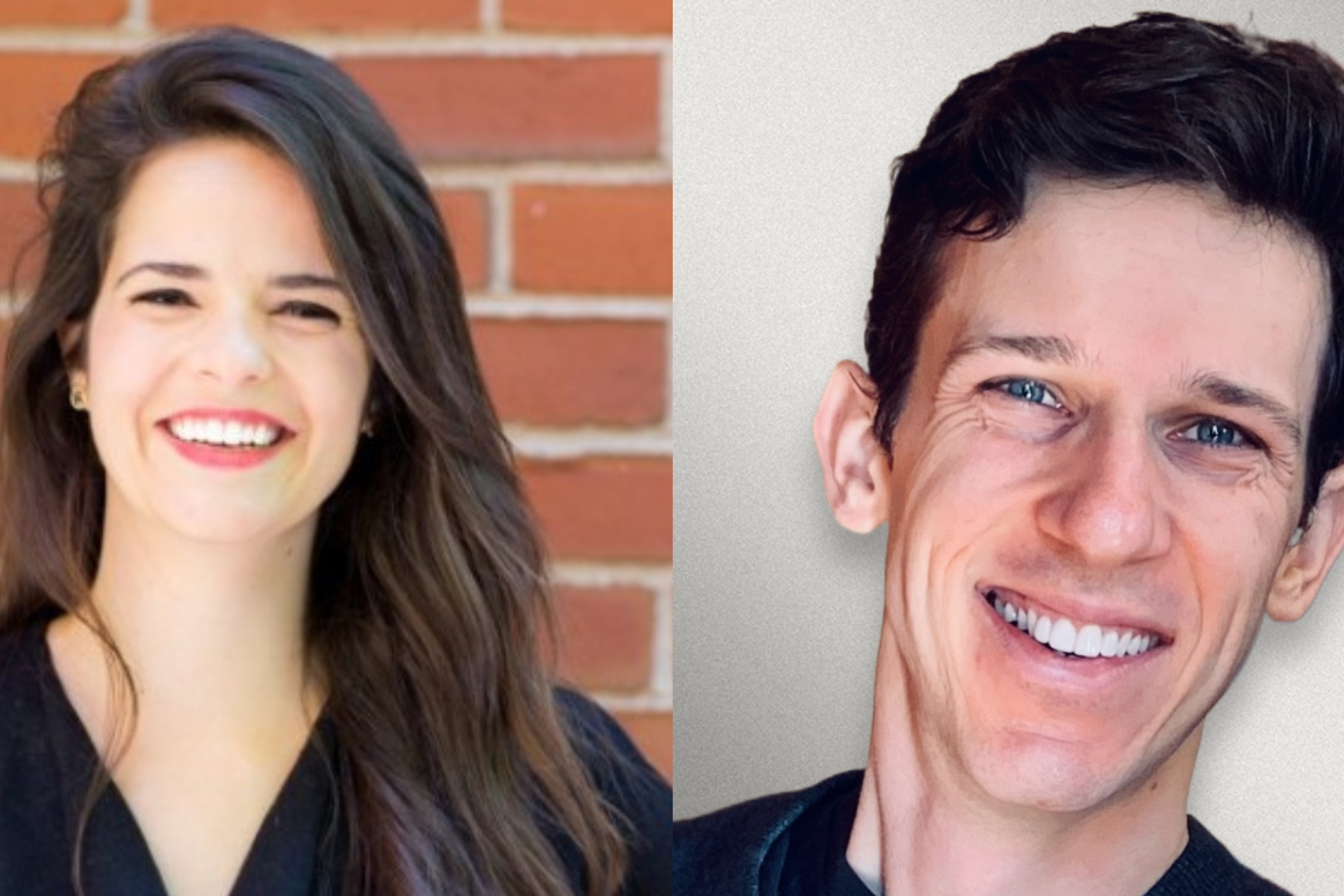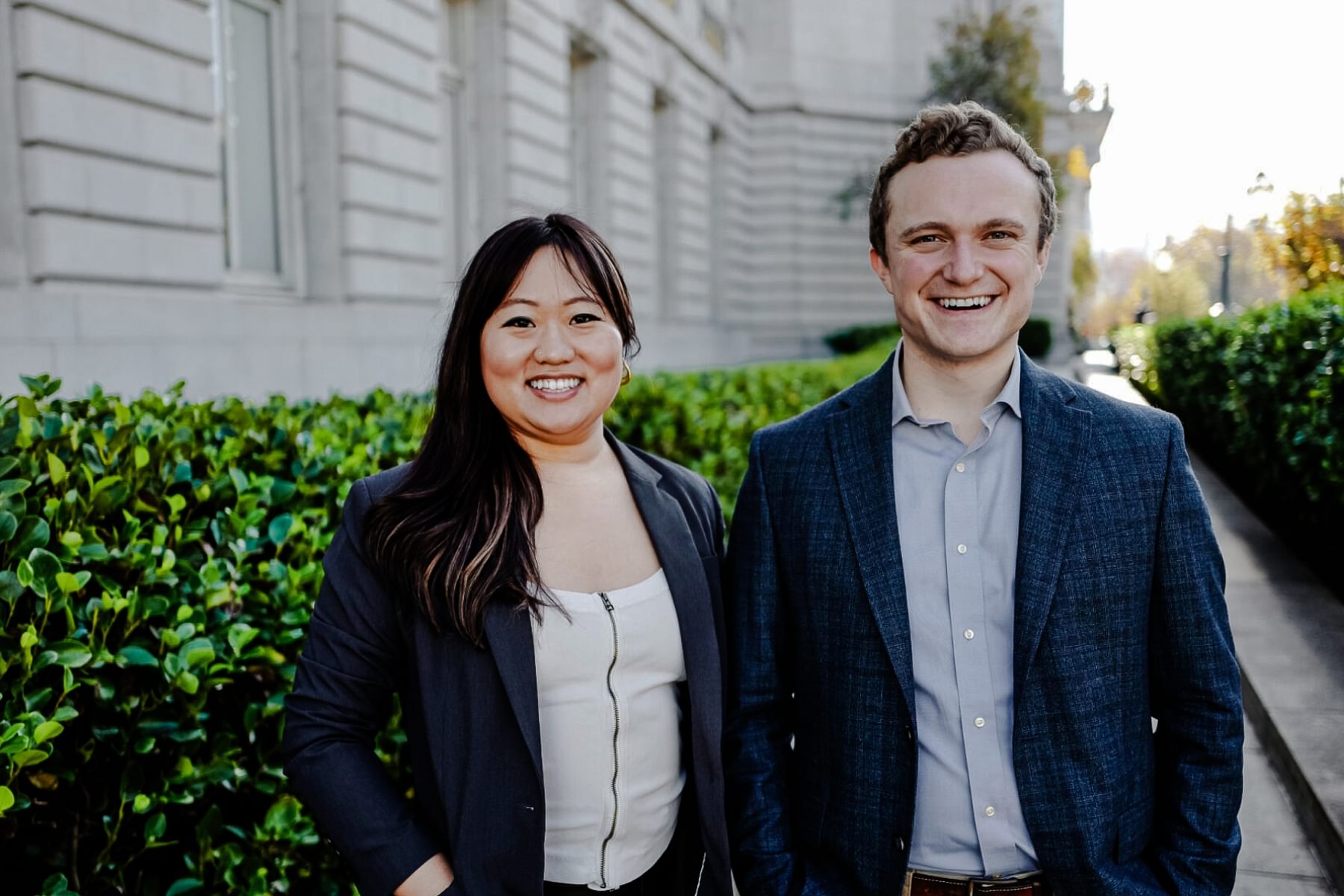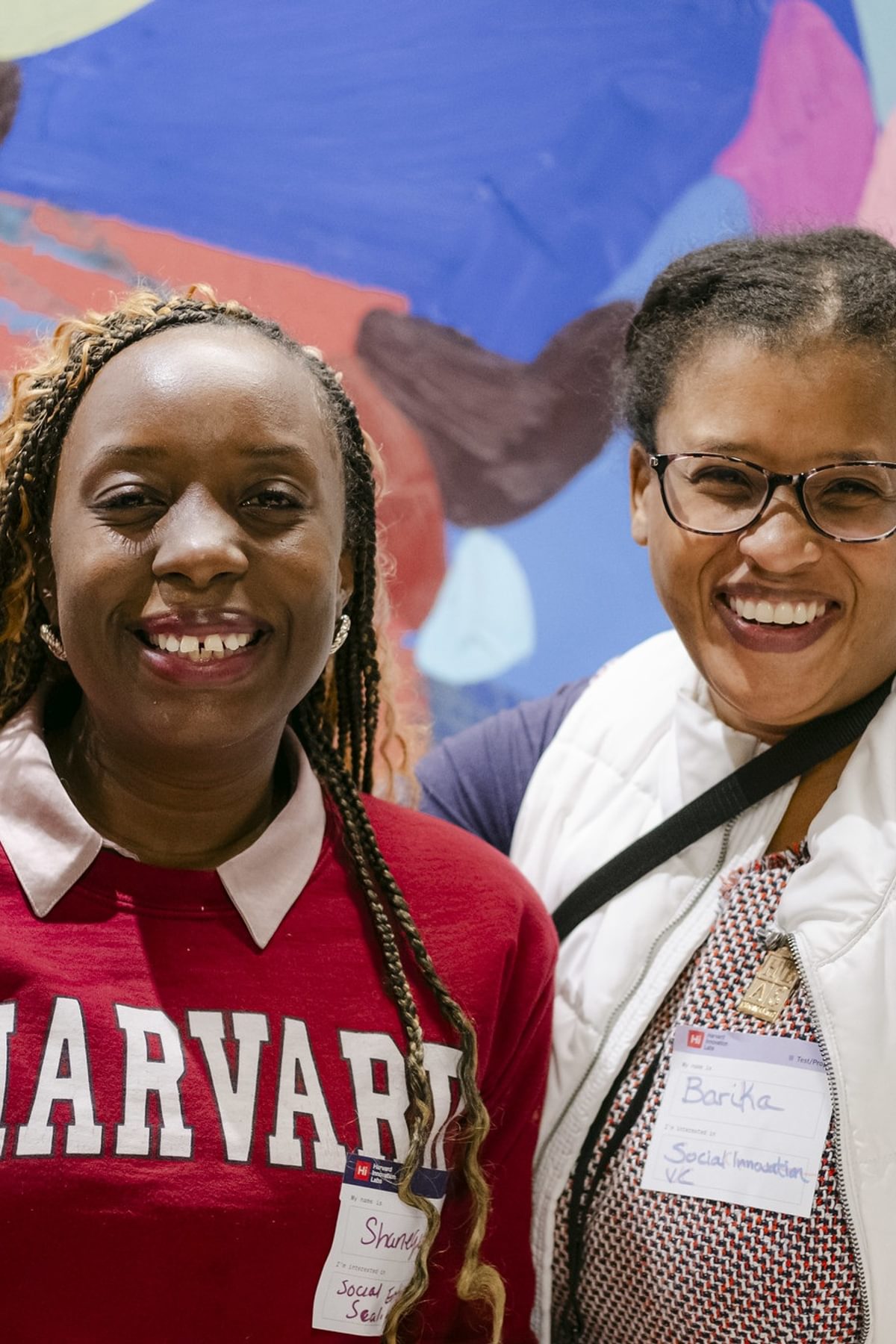We recently had the opportunity to sit down with Andy Coravos (MBA '17), co-founder and former CEO of HumanFirst (recently acquired by ICON plc, NASDAQ: ICLR) and research collaborator at Harvard-MIT Center for Regulatory Sciences, and David Segar, a Harvard-trained neurosurgeon/scientist who builds new technologies to improve the treatment of neurological disease.
In this conversation, Andy and Dave discuss the transformative potential of these technologies to improve clinical trials and therapeutics development, as well as the ways in which these technologies could enable a paradigmatic shift toward early detection and prevention of illness.
How did you both first become interested in the intersection of technology and healthcare?
Andy Coravos: With a dentist father and a nurse mother, healthcare has always been a part of my life. My interest really took off during my time consulting at McKinsey and then in private equity at KKR. I saw firsthand how many industries were becoming tech-enabled, and recognized the potential of new sensing technologies to revolutionize healthcare. I decided to switch my career into software engineering, and I spent time at Instacart and Akili Interactive, the first digital therapeutic cleared by the FDA that looks and feels like a video game.
Shortly later, I served as an entrepreneur in residence (EIR) in the FDA’s Digital Health Unit, and when I left I was inspired to co-found HumanFirst. We’ve been tracking the explosion of connected technologies—over 275 million wearables were shipped globally in 2021, and this number is expected to double soon. These devices are no longer just consumer products; they’re becoming essential healthcare tools. More than 130 pharma and biotech companies are already using AI-powered digital biomarkers and sensor-derived outcomes to enhance their clinical trials, which is shifting the way we measure success and understand patient outcomes.
David Segar: For me, the connection between sensing technology and healthcare became clear through my clinical work treating patients with epilepsy, Parkinson’s, severe OCD, and refractory depression. The rapid increase in wearable and ambient sensing technologies is starting to enable us to better understand the human experience through more continuous monitoring—whether it’s wearables tracking physiological data, smartphones capturing activity levels and speech patterns, or in-home sensors monitoring sleep patterns. This comprehensive, real-time data offers a much fuller picture of a patient’s condition. For example, by developing an understanding of how a patient’s behavior changes after taking a medication, or how a patient with Parkinson’s is affected by their brain stimulation, we can begin to tailor interventions much more precisely and potentially improve outcomes.
Let's start with the transformative potential of wearables and passive behavioral data collection in human health. Andy, from your perspective as CEO of HumanFirst, how will this technology transform the future of health?
AC: I believe in the potential of technology to personalize and democratize access to healthcare. We’ve seen powerful computers become compact and ubiquitous in our daily lives—think smartphones, wearables, you name it. Because of this, we now have more reliable tools that can passively capture the human experience.
In the past few years, there has been an explosion of AI/ML models to enhance drug discovery to select targets. That said, there is also a big opportunity to change not only drug discovery but also drug development, namely how we measure success, and improve the quality of the outcomes and endpoints in a clinical trial.
As a very simple example, for cancer drugs, the most common measure is called ‘progression-free survival’ – e.g., was the person able to live with the disease without it getting worse. But what about measuring whether someone sleeps better, can walk upstairs and pick up their grandchild, can park in the far lot in Target and walk around the whole store. Historically, sponsors of clinical trials collected this data using surveys called “patient-reported outcomes” (PROs). But who really wants to be filling out forms all the time? Passive data collection of phenotypic signals can provide meaningful enhancements to the participant experience.
The incentives we design impact the games we play. So, if pharma and biotech clinical trial sponsors collect more outcomes that are meaningful to patients, the long-term result will be better and more equitable drugs on the market.
David, as a neurosurgeon involved in the study of brain activity and behavior, how do you see these developments impacting your field?
DS: Andy is spot-on. Put simply, we can’t fix what we can’t measure. We’ve traditionally had very few methods for continuously measuring metrics like movement, cognition, emotion and motivation. As we aim to more precisely treat conditions such as depression, anxiety, addiction, and chronic pain, we need better assets to measure these complex states and understand the impact of our interventions.
The integration of AI and ML models with wearable technology has opened up unprecedented avenues for capturing phenotypic data—essentially, the observable characteristics of individuals that can be measured over time. In the past, we relied on patient-reported outcomes, which are subjective and hard to consistently connect over longer periods of time. Now, with wearable and other sensing technologies, we can passively collect continuous data on things like sleep patterns, heart rate, and movement, which gives us a much more detailed and accurate picture of a patient's condition. The ability to monitor patients in real-time and in their natural environments, rather than just during clinical visits, will revolutionize how we diagnose and treat neurological conditions.
Adoption of AI-powered digital endpoints in clinical trials is widespread

What about the challenges? Andy, you mentioned earlier that there’s a big opportunity to change how we measure success in clinical trials. How can sensor-derived digital health technologies (DHTs) which as wearables contribute to this shift?
AC: Traditionally, clinical trials have focused on hard endpoints, like previously mention whether a patient survives or how long they remain progression-free in the case of cancer. But these endpoints don’t capture the full picture of a patient’s quality of life. With the data we can now collect from wearables and other sensors, we have the potential to measure more meaningful outcomes—like whether a patient can sleep better, or perform everyday tasks like walking up stairs or shopping. This data, if captured passively and accurately, can provide a much richer understanding of how a treatment impacts a patient's life, which is what really matters. This requires a shift in the way we design clinical trials and the endpoints we prioritize. The goal is to develop therapies that improve patients' lives in ways that matter to them.
David, from your perspective, how do you see the integration of this technology impacting the therapeutic development process?
DS: Rich and continuous behavioral data has the potential to make the therapeutic development process more precise and patient-centered. By capturing better phenotypic data through digital tools, we can tailor treatments more effectively to individual needs. This precision is important in the treatment of neurological disease, where there’s enormous variability in how conditions present and progress. Plus, by continuously monitoring patients, we can detect subtle changes in their condition earlier, which could lead to more timely interventions. This approach may also help us identify new therapeutic targets by revealing patterns in data that we wouldn’t otherwise see.
Andy, you mentioned that this is a problem that will benefit from the attention of multiple disciplines. What does that look like?
AC: What we're talking about isn't only a technological challenge; it's a multidisciplinary one. To successfully employ digital health technologies (DHTs), sponsors need input from software developers, data scientists, pharmaceutical companies, healthcare providers, regulators, ethicists, and more. The technology is there, and now we need to think about how to implement it in a way that is secure, ethical, and beneficial to patients. First at HumanFirst, and now ICON, the Atlas platform tracks over 3,000 connected technology components across 1,700 clinical trials and analyzes vast amounts of research to stay on top of these developments. This is just the beginning. The real challenge is in creating a coordinated effort that aligns with what matters most to humans—improving the quality of life.
Digital endpoints across healthcare and research

David, how do you see this coordination playing out in the future of healthcare?
DS: It’s going to require a shift in mindset across the board. We need to move from a model of care that’s reactive—waiting for patients to show up with symptoms—to one that’s proactive and preventive. By using these sensing technologies to monitor patients continuously, we can intervene earlier - potentially before they even realize something is wrong. This could lead to a more personalized and preventive approach to medicine. But, as Andy mentioned, broad collaboration is needed to ensure that the technology meaningfully benefits patients.
Andy, you had the opportunity to be part of Launch Lab X (LLX). How did that experience impact the foundation and growth of HumanFirst.
This program was a foundational part of the HumanFirst early days. We had worked on an early prototype for the company while we were cross-registered at MIT’s Media Lab via the Revolutionary Ventures class, and built additional prototypes via the Harvard Innovation Labs. Upon graduation, we were accepted into LLX, an eight-month online accelerator for Harvard alumni founders who want to grow their ventures and their community. During that time we were able to secure our first big pharma contract, which was a milestone that helped us to raise our $2m seed round.
In my LLX cohort, I got to know founders like Khaled (Legacy) and Lina (Infinity AI), who both helped me think through company growth tactics (and overcome stumbles!). On a personal note, I had an opportunity to angel invest in both of their companies, which has been a true honor to see their growth, fortitude, and creativity over the years. It’s something special to be part of the journey from a prototype to a multi-million dollar business. True builders and innovators.
Any final thoughts on where this is all heading?
AC: We’re entering a new era in healthcare where the focus is shifting from treatment to prevention, and from isolated interventions to continuous care. The ability to collect and analyze data passively, without disrupting patients' daily lives, allows us to understand health in a more holistic way. This is not only about managing diseases, but about enhancing overall well-being.
In the movie the Dead Poets Society, Robin Williams as John Keating said: “Medicine, law, business, engineering, these are all noble pursuits, and necessary to sustain life. But poetry, beauty, romance, love, these are what we stay alive for.” For me that’s what this is all about - if we can improve the life sciences to sustain life, then we free up more human capability to stay alive.
In a capitalist system, it’s important to really understand the incentives and ensure that technologies are deployed with ethical systems and business partners. For instance, just because an organization is a non-profit doesn’t mean it’s ethical, especially in healthcare. A non-profit status is a tax status, and possibly nothing more. New entrants to the system will need to check in with their values and ensure that we deploy safe and effective systems especially as the community that develops these technologies is shifting rapidly.
I’d recommend getting involved if you can by serving a “tour of duty” within the government and spending some time with communities like the Harvard-MIT Center for Regulatory Sciences.
DS: We can’t fix what we can’t measure. So if we can better understand people in the context of their lives, day-to-day and month-to-month, we can catch subtle changes in a patient's condition long before they escalate into more serious health issues. This opens up the possibility of intervening earlier, which could prevent the progression of diseases and reduce the need for more invasive treatments later on. The goal is to move towards a model of care that doesn’t just extend life, but enhances the quality of life from the earliest stages. We’re on the cusp of a transformation where healthcare is not just about reacting to illness, but actively maintaining and improving health. I believe that as these technologies mature, we’ll see a healthcare system that is more personalized, proactive, and centered around what truly matters to people—their quality of life, their ability to function day-to-day, and their sense of well-being.






